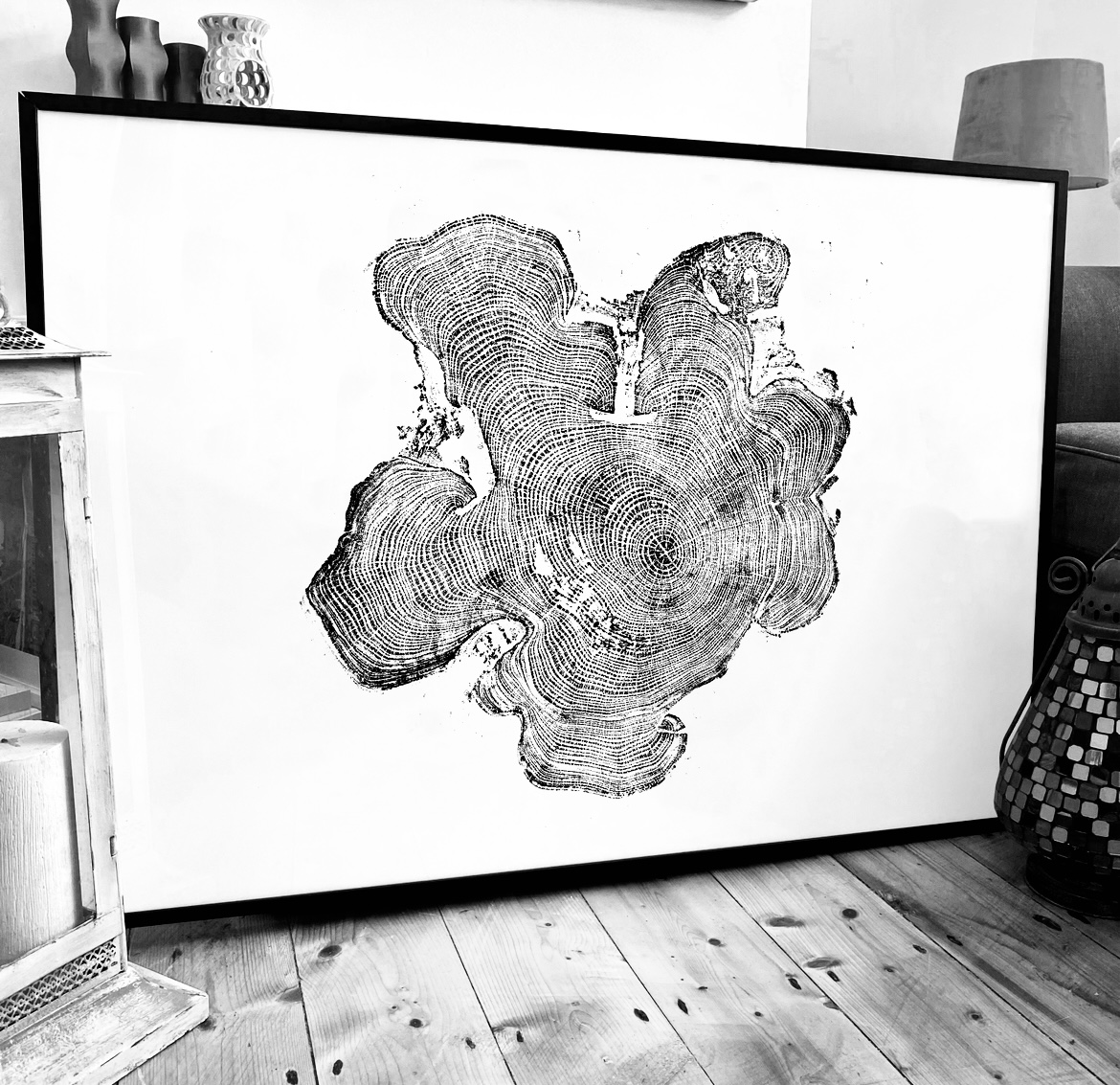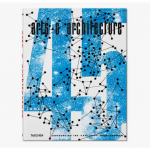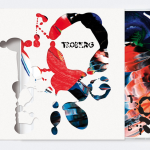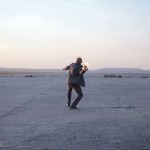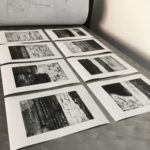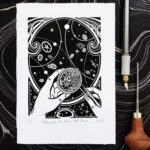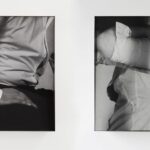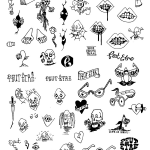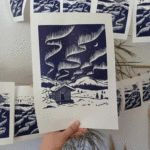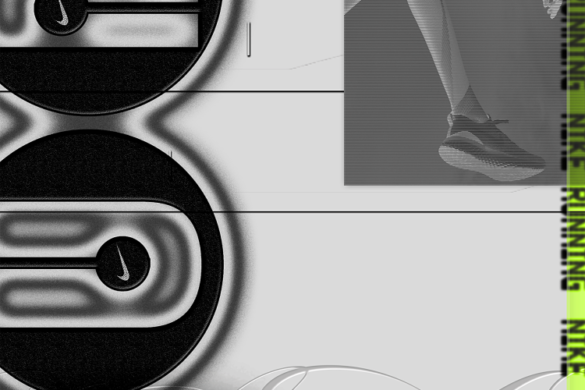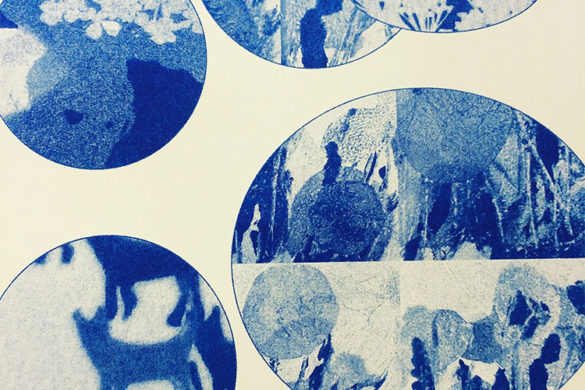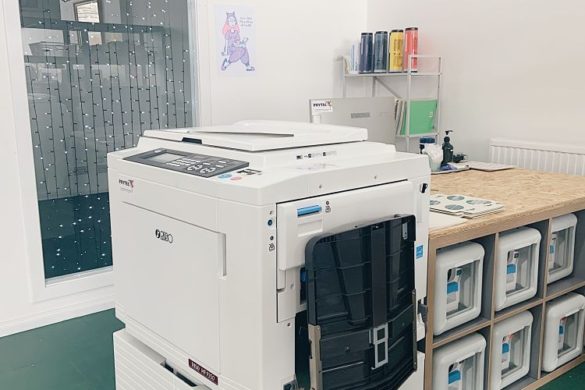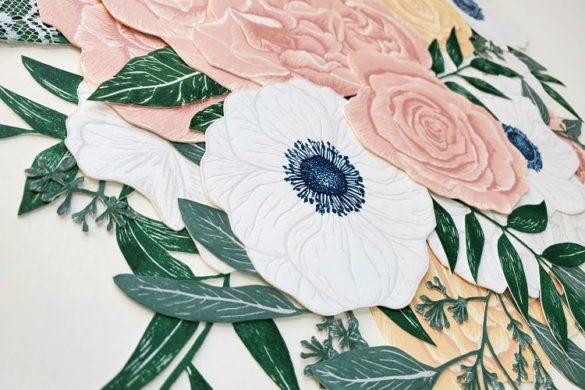Shou Sugi Ban can be roughly translated to “burned cedar” and is the common name for the traditional method that protects timber and wood surfaces by burning them to prevent weathered damage. Mostly used for exterior cladding on Japanese houses, it has been revitalised by a boom in popularity in western countries such as America. The blackness of the wood is incorporated into modern architecture and interior design. Despite the burning and transformation of the surface the wooden pieces are still imbued with elemental qualities of their natural habitats. The common name for this method in Japan is slightly different, and is known as Yakisugi.
Swansea-based printmaker Lee Richards has been creating prints from tree slabs for six years, but it was not until his MA course that he first started to seriously explore the concept and the critical theory behind the process. All of his research led him to the method of Shou Sugi Ban, and then to the concept of Wabi Sabi.
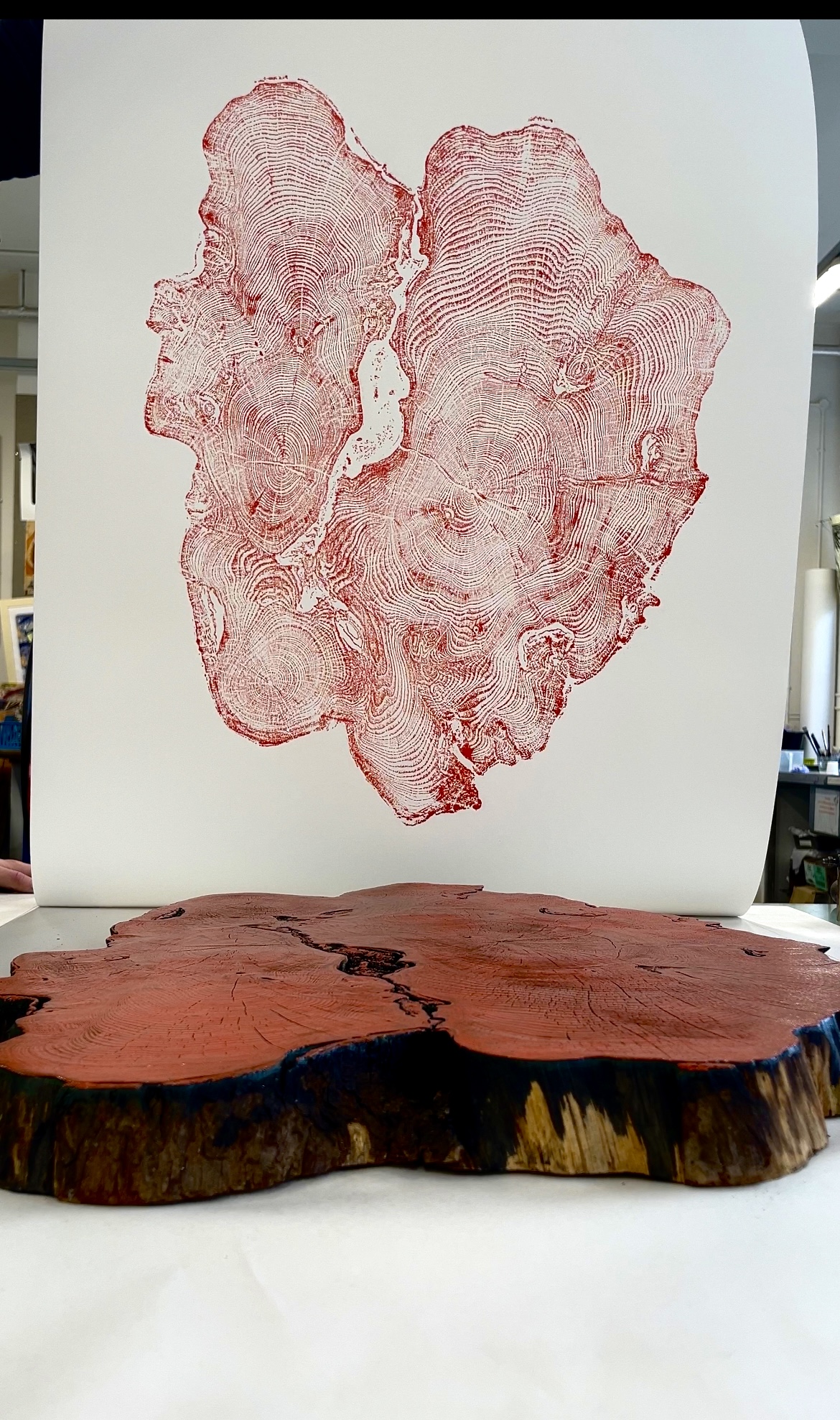
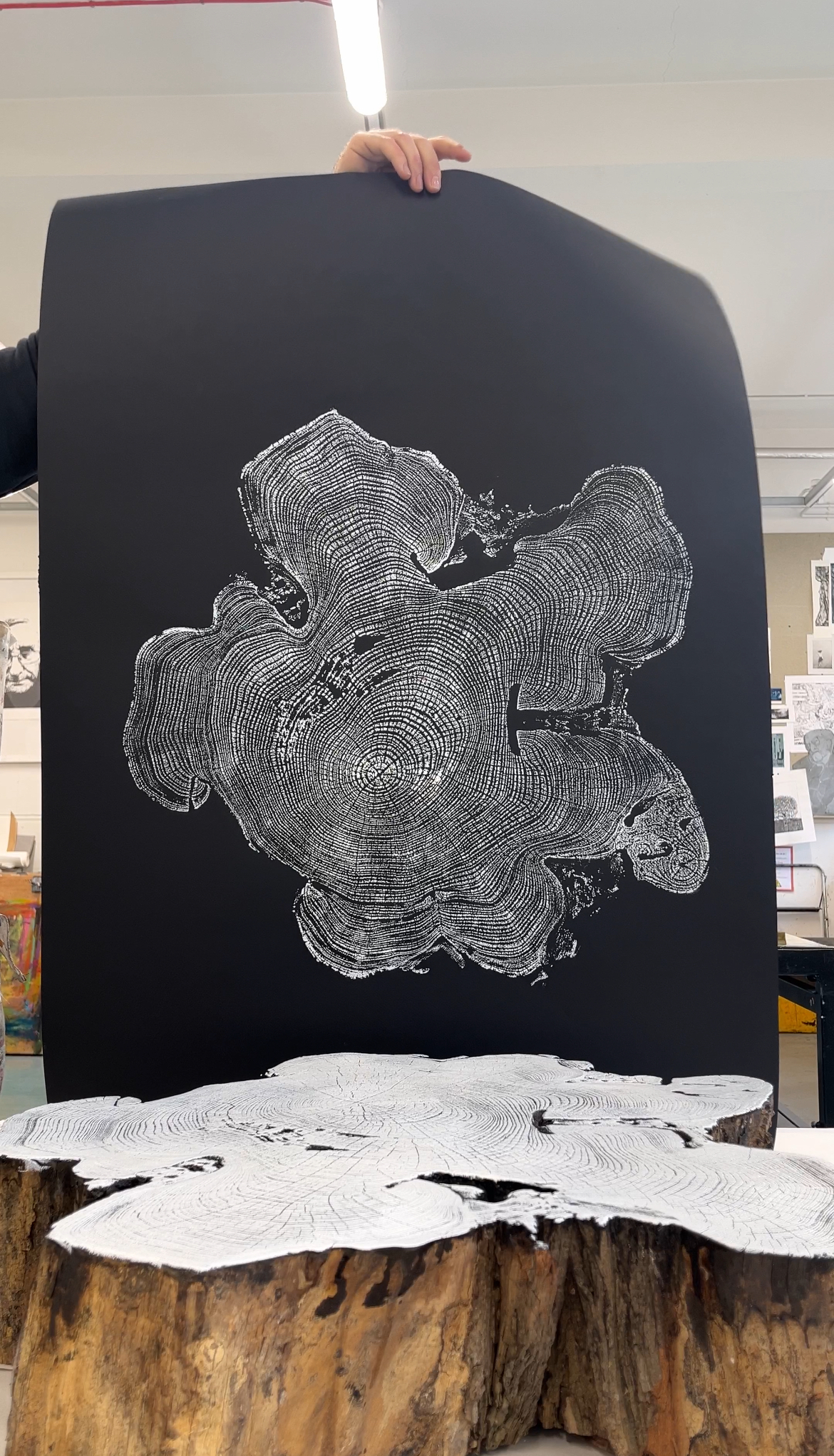 Burning and charring the wood using the Shou Sugi Ban practice and aesthetic is visually a destructive process to witness. However, this destructive methodology leaves the material with multipurpose creative potential, as the burning of the wood’s surface greatly removes a certain amount of mass from the object. Furthermore, when the charred wood is cleaned and prepared for printing the final print creates a visually heavier and lighter appearance. The effect of these actions is a visually piercing contrast between the white paper and the preserved black tree grain patterns. The impact of the contrast shows a metaphorical divorce between the original form of the tree and the content of peoples understanding of what they were seeing before. When the viewer sees the tree ring print for the first time, instead of seeing something familiar that would not leave an impression, they are now seeing something that is familiar. Furthermore, it has also been revitalised and appropriated from strange to normal by preservation of the past and entailing the co-existence between past and present.
Burning and charring the wood using the Shou Sugi Ban practice and aesthetic is visually a destructive process to witness. However, this destructive methodology leaves the material with multipurpose creative potential, as the burning of the wood’s surface greatly removes a certain amount of mass from the object. Furthermore, when the charred wood is cleaned and prepared for printing the final print creates a visually heavier and lighter appearance. The effect of these actions is a visually piercing contrast between the white paper and the preserved black tree grain patterns. The impact of the contrast shows a metaphorical divorce between the original form of the tree and the content of peoples understanding of what they were seeing before. When the viewer sees the tree ring print for the first time, instead of seeing something familiar that would not leave an impression, they are now seeing something that is familiar. Furthermore, it has also been revitalised and appropriated from strange to normal by preservation of the past and entailing the co-existence between past and present.
The overall idea is to first defamiliarise the object with an alienating effect, and then to refamiliarise by reintroducing the once known but since forgotten, as if seeing it for the first time.
We cannot choose what we know, and neither can we choose what part of our dormant knowledge will be awakened by the stimulus of an image, reciprocally reactivated, and reinforced by it. Regardless of how much we strain to maintain a ‘disinterested’ aesthetic mode of apprehension, when we look at an image it is instantly and irreversibly integrated and collated with the intricate physic network of our knowledge.
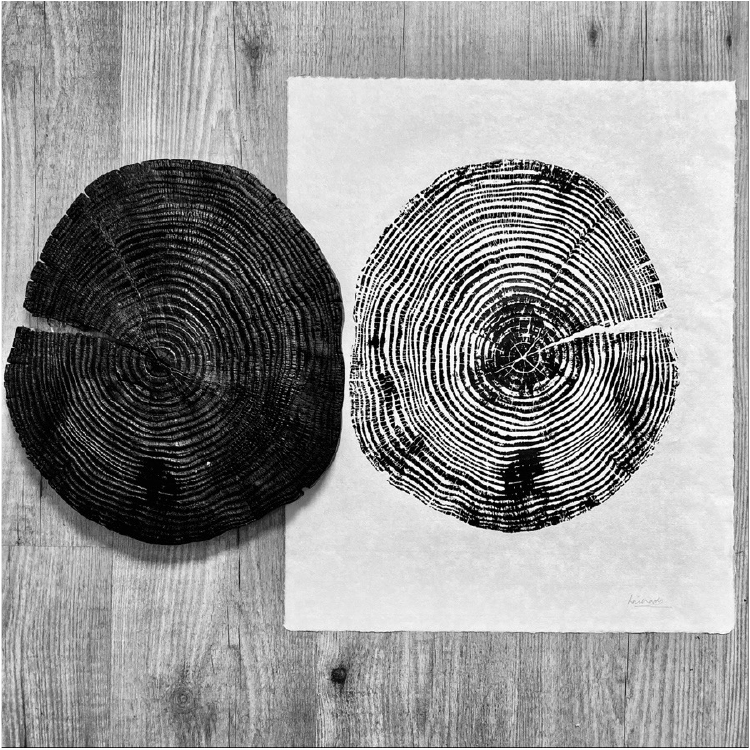
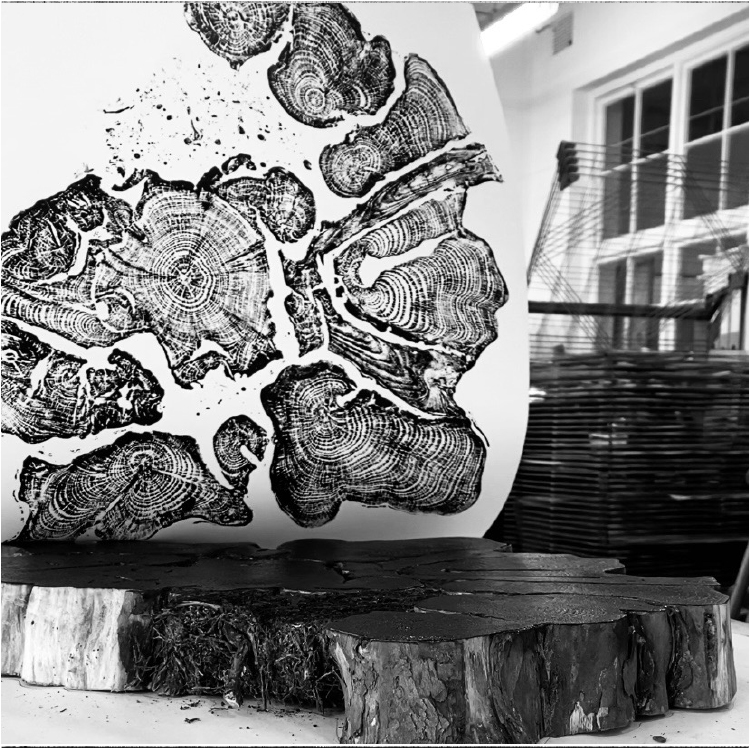
 Lee’s Tree Ring prints represent a juxtaposition between Japanese aesthetics and practices, and a defamiliarisation with parallelism by transferring the usual perception of an object into the sphere of new perception. When perception becomes habitual, it becomes unconsciously automatic. Sequentially from this idea, to make the viewer see the art in a different perspective, the printmaker takes the familiar object and creates a contrast by using different techniques related to printmaking. The effect of such techniques is to initiate curiosity and elicit the sense of being affected by what the viewer is spectating. This results in an experience of being hypnotised by what they do not see when being surrounded by the familiar, thus capturing a moment of recorded history before it might otherwise be too late.
Lee’s Tree Ring prints represent a juxtaposition between Japanese aesthetics and practices, and a defamiliarisation with parallelism by transferring the usual perception of an object into the sphere of new perception. When perception becomes habitual, it becomes unconsciously automatic. Sequentially from this idea, to make the viewer see the art in a different perspective, the printmaker takes the familiar object and creates a contrast by using different techniques related to printmaking. The effect of such techniques is to initiate curiosity and elicit the sense of being affected by what the viewer is spectating. This results in an experience of being hypnotised by what they do not see when being surrounded by the familiar, thus capturing a moment of recorded history before it might otherwise be too late.
@lee_richards_illustration
leerichardsillustration.com
You might like...
- Amelia Bown - November 20, 2024
- Gilfalo Art Design | The Journey So Far - November 19, 2024
- Printed by Us: Printing Positive Change - November 18, 2024

